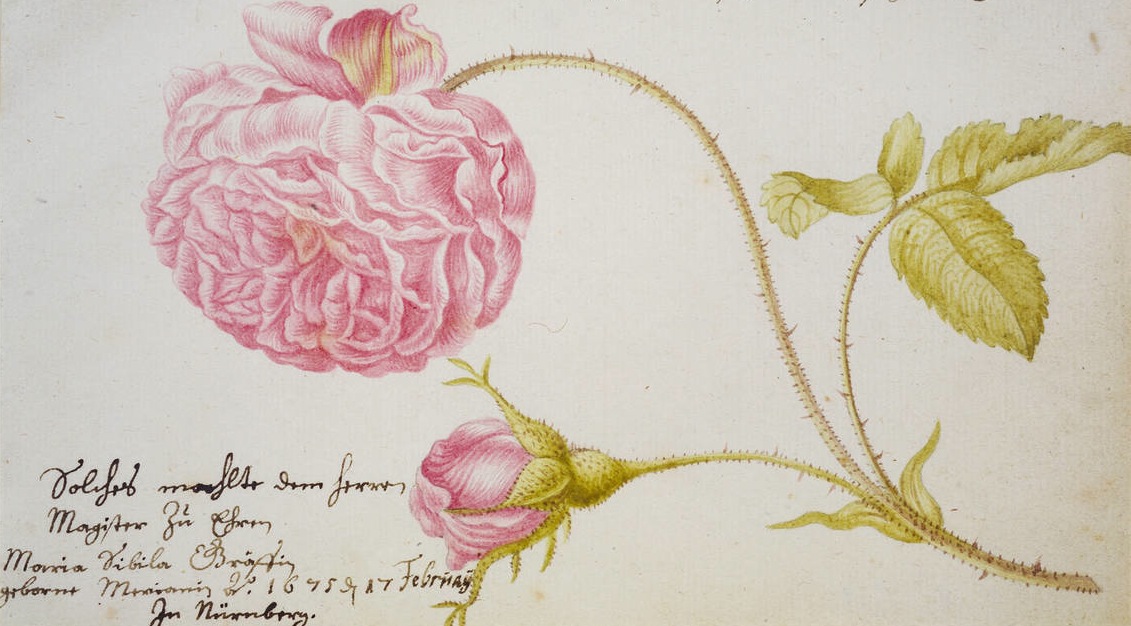Planting the Seeds: The Origins of the Genre
Still-life painting arguably began in ancient Greece with the mythical story of an encounter between two men, Zeuxis and Parrhasius. Pliny the Elder wrote that a painting of grapes by Zeuxis was so realistic that birds flocked to its surface to peck at the sweet purple fruit. Legend has it that Zeuxis and Parrhasius were in constant competition with one another to create the most lifelike artwork. In attempts to suppress this deep-seated rivalry, they agreed to compare their work side-by-side. So convincingly real was Parrhasius’ technique that when Zeuxis encountered one of his paintings, he asked that the painted curtain be pulled aside to expose the work of art. Zeuxis’ request revealed his defeat, for he soon discovered that the silk blue curtain was not made of cloth, but rather pigment, and had been painted onto the two-dimensional panel. The story of Zeuxis and Parrhasius exposes an inherent ability of art to trick the human eye into believing that the painted object appears to be a real object. This idea that art has the ability to breathe life into an inanimate object proves especially intriguing when considering the genre of flower still lifes from the seventeenth and eighteenth centuries, as well as art from today.
The seventeenth and eighteenth centuries in Europe were marked by an extreme fascination with nature. These two hundred years were teeming with interest in all things belonging to the natural world. From extensive botanical encyclopedias to small, intricate sketches of individual tulip bulbs, this historical period produced a remarkable variety of nature studies across a variety of media, and it was distinct in its exploration of how the natural world interacts with the real world, with humanity. The earliest known examples of flower paintings were created in the first five years of the seventeenth century. Flowers had tremendous importance in the culture and art of Dutch society during this period, largely resulting from a heightened interest in science across Europe. Intellectuals began to apprehend that flowers and flowering plants could be utilized beyond their medicinal and nutritional value. This realization resulted in a heightened interest in the study of botanical specimens and, thus, a widespread circulation of information about their form and function. Born out of this amplified fascination with flowers was a culture of exchange, in which the most prominent members of society gathered and traded floral specimens, particularly those with exotic qualities (note 1). Flowers were submersed in an extensive network of trade during this era, becoming objects to be bartered. At first, this circulation was accessible only to those belonging to the highbrow community of buyers, sellers, and intellectuals. These individuals, known as liefhebbers, possessed an intemperate passion for flowers. They sought to construct an insular community focused on the acquisition of knowledge, the propagation of discussion and the facilitation of exchange (note 2). Most viewers assume that flower paintings offer nothing more than an aesthetically pleasing composition or an arrangement of multicolored buds and blossoms meant to trick and please the eye. In reality though, the paintings offer so much more. To neglect their deeper meaning and merely assign them the theme of vanitas would be to gloss over a long, rich history of floral still-life painting. A Culture of Cultivation proposes a new thematic lens through which the viewer can appreciate and comprehend this genre.
Notes:
note 1. Bergström, Ingvar, and Arthur K. Wheelock. Still Lifes of the Golden Age: Northern European Paintings from the Heinz Family Collection. Washington: National Gallery of Art, 1989. 28. Print.
note 2. Goldgar, Anne. "Something Strange." Tulipmania: Money, Honor, and Knowledge in the Dutch Golden Age. Chicago: University of Chicago, 2007. 20-61. Print.
